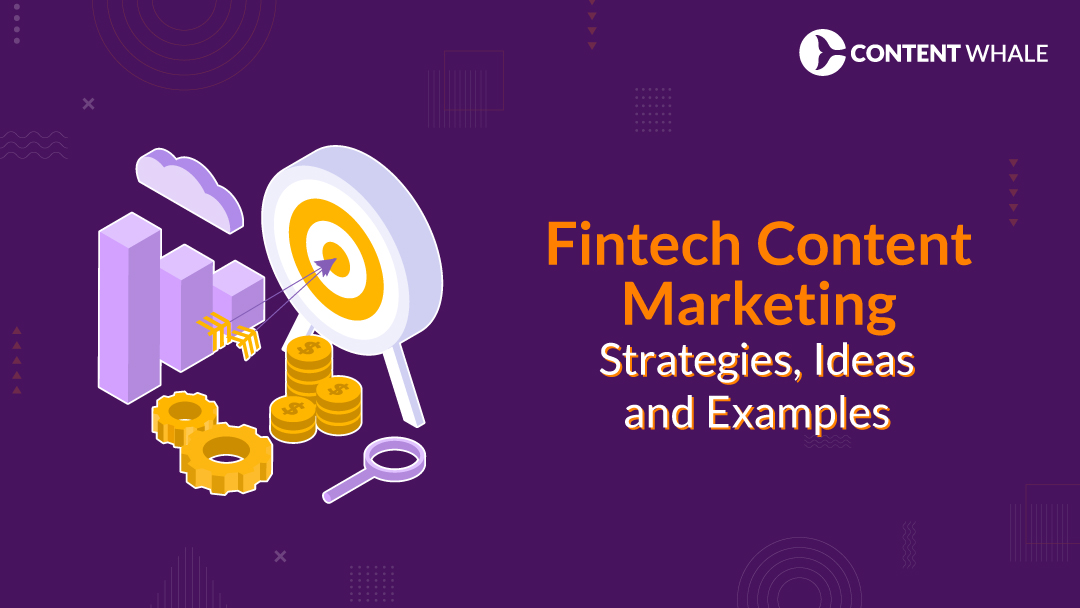The fintech industry is on a remarkable growth trajectory, projected to expand into a $1.5 trillion market by 2030. As this sector evolves, Fintech Content Marketing becomes a pivotal strategy for companies aiming to capture and engage a Sophisticated audience. This rapid expansion reflects not just innovation in technology but also the crucial role of effective communication through diverse fintech content ideas.
Understanding and implementing a tailored fintech content strategy is vital. Companies must adapt their messaging to resonate with varied audiences, including executives, tech enthusiasts, and small business owners. The integration of relevant fintech content examples within a strategic framework can enhance visibility and influence in the market.
Crafting content that accurately represents financial technologies while engaging an informed audience requires precision. It’s not just about spreading information; it’s about crafting messages that inform, engage, and convert.
Thus, the right approach in fintech content marketing is not merely promotional but educational and engaging, ensuring it meets the specific needs of its audience.
Fintech Content Marketing Strategies

1. Understanding Your Audience
Understanding the audience is the foundation of any effective fintech content strategy. The audience in fintech typically includes key decision-makers like executives, innovative tech enthusiasts, and small business owners.
2. Tailoring Content to Audience Segments
Each group has unique needs and preferences, shaping the approach to Fintech Content Marketing. For example, executives may seek an in-depth analysis of ROI and efficiency, while tech enthusiasts might be more interested in the latest innovations and technical details.
3. Importance of Content Personalization
Content personalization plays a significant role in engaging these diverse groups. By tailoring content to meet the specific interests and challenges of each segment, fintech companies can enhance user engagement and loyalty. This personalized approach ensures that the content is relevant, thereby increasing its effectiveness and impact.
4. Incorporating SEO Best Practices
Incorporating SEO best practices is crucial for maximizing the visibility of fintech content. This includes using relevant keywords, creating quality backlinks, and ensuring the content is optimized for search engines without sacrificing user experience. An effective SEO strategy can greatly increase the organic reach of content, making it more likely to be seen by the target audience.
Together, these elements form a robust framework for fintech content marketing. By focusing on audience understanding, personalization, and SEO, fintech companies can create powerful content that not only reaches but also resonates with their intended audience.
Innovative Fintech Content Ideas

1. Thought Leadership Articles
Exploring fresh fintech content ideas is essential for keeping your strategy dynamic and engaging. Thought leadership articles authored by industry experts can establish your brand’s authority and showcase your expertise in fintech. These pieces not only draw in a knowledgeable audience but also bolster your credibility in the industry.
2. Case Studies
Case studies are another powerful element of fintech content marketing. They provide concrete examples of how your technology has succeeded in real-world applications. By detailing the challenges, solutions, and outcomes of successful fintech projects, case studies help illustrate the practical benefits of your offerings and can significantly influence potential clients’ decision-making processes.
Here are some real-life case studies of successful fintech content marketing strategies:
Monobank’s Gamification Campaign
Objective: Monobank aimed to increase user engagement and retention by leveraging gamification.
Strategy: To create a more engaging user experience, they introduced gamified elements within their banking app. These included rewards for completing certain actions, challenges, and interactive features.
Results
- Reached 3.5 million users.
- Achieved 1.3 million daily active users.
- Acquired 100,000 new customers monthly.
- The gamified approach significantly enhanced user engagement and retention, making the app more appealing and increasing overall user activity.
Klarna’s “House of Y2K” Campaign
Objective: Klarna sought to re-engage millennials and Gen Z shoppers, reinforcing its image as a leader in seamless online shopping.
Strategy: The “House of Y2K” campaign featured Paris Hilton and embraced a nostalgic Y2K theme. It combined digital and physical marketing tools, including a curated event that blended past trends with modern shopping experiences.
Results
- 63% increase in app downloads.
- 7 billion social media impressions.
- 344 global press coverages.
- The campaign successfully leveraged celebrity influence and cultural relevance to create a high-impact marketing initiative.
These case studies highlight the importance of creative and targeted content strategies in fintech marketing. By understanding their audience, leveraging innovative marketing techniques, and using a mix of digital and physical engagement tools, these companies achieved significant growth and engagement.
3. Interactive Content: Webinars and Podcasts
Engaging your audience through interactive content like webinars and podcasts is also an effective strategy. These platforms offer a direct way to discuss the latest innovations and trends in fintech, facilitating a deeper connection with your audience. By featuring guest speakers and industry leaders, these formats can enhance your content’s appeal and reach.
4. Diversifying Content Formats
Diversifying your content formats is key to maintaining audience interest. Beyond articles and case studies, consider incorporating infographics, video content, and interactive tools. These varied formats cater to different learning styles and preferences, ensuring your content remains engaging and accessible to a broader audience.
5. Leveraging Social Media
Leveraging social media platforms is another critical aspect of innovative fintech content strategies. Regular updates, industry news, and engaging posts can help you stay connected with your audience. Utilizing platforms like LinkedIn, Twitter, and Instagram can amplify your reach and foster community engagement.
These innovative approaches not only enrich your fintech content strategy but also ensure that your content remains relevant and compelling. By incorporating these varied fintech content examples, you can effectively engage different segments of your audience and maintain their interest over time.
Examples of Effective Fintech Content

1. Blog Posts
Showcasing successful fintech content examples can provide invaluable insights for those looking to refine their fintech content marketing strategies. Detailed blog posts that explain complex financial technologies in understandable terms can significantly enhance reader engagement. These posts serve to educate the audience, simplify intricate topics, and establish the company as an industry expert.
2. Whitepapers
Whitepapers offering in-depth analysis and insights into market trends or product potentials serve as excellent tools for generating leads and establishing thought leadership. By presenting well-researched data and forward-looking insights, whitepapers help build credibility and attract a knowledgeable audience interested in deeper dives into fintech innovations.
3. Video Content
Another powerful medium is video content. Videos that explain intricate fintech operations or demonstrate user-friendly features of financial apps appeal to a broad audience and can increase understanding and engagement. These videos help demystify fintech solutions and make them accessible to non-experts by breaking down complex topics into digestible pieces.
4. Infographics
Infographics are equally effective in translating complex data and statistics into compelling visual stories that capture the audience’s attention quickly. They are particularly useful for summarizing market research or illustrating financial trends in a format that is easy to share and consume. This visual format not only aids in higher retention of information but also encourages sharing among networked professionals, amplifying your content’s reach.
Together, these fintech content examples underscore the diversity and adaptability of content strategies within the fintech sector. By leveraging a variety of content types, fintech companies can cater to the preferences of a diverse audience, making their fintech content strategy more robust and impactful. Combining blog posts, whitepapers, videos, and infographics ensures that the content is accessible, engaging, and informative for different segments of the audience.
Implementing Your Fintech Content Strategy

1. Establishing a Content Calendar
Establishing a well-organized content calendar is essential to effectively implementing a fintech content strategy. This calendar serves as a roadmap, guiding the publication schedule to ensure consistent engagement with your audience. Planning your content in advance helps align with strategic business goals and ensures timely execution of marketing campaigns.
2. Utilizing the Right Tools and Platforms
Utilizing the right tools and platforms is crucial for creating, managing, and distributing fintech content. Content management systems (CMS) and digital marketing tools offer features that streamline these processes, from drafting and scheduling posts to analytics and SEO optimization. Selecting tools that integrate seamlessly with your existing technologies and enhance your team’s efficiency is key to a successful content strategy.
3. Measuring Content Impact
Finally, measuring the impact of your content is imperative. Key Performance Indicators (KPIs) such as engagement rate, click-through rate, conversion rate, and overall return on investment (ROI) provide valuable insights into how well your content performs. These metrics help in understanding what resonates with your audience, guiding future fintech content ideas and adjustments to your strategy.
By focusing on these strategic areas, companies can ensure their fintech content marketing efforts are effective and provide maximum value to the business and its target audience. Each step, from planning through analysis, is integral to maintaining a dynamic and responsive fintech content strategy that drives results.

As we wrap up our exploration of Fintech Content Marketing, it’s clear that the strategic deployment of content plays a critical role in engaging and retaining audiences in this dynamic sector. We’ve covered a range of effective strategies and fintech content ideas that companies can leverage to enhance their market presence.
The takeaway is straightforward: experimenting with different types of content is not just beneficial but necessary for staying relevant in the fast-paced fintech industry. Whether through insightful blog posts, in-depth whitepapers, interactive webinars, or engaging infographics, each content type serves a unique purpose and reaches different segments of your audience.
We encourage fintech companies to continually refine their fintech content strategy, embracing new technologies and methodologies to improve content delivery and effectiveness.
Engaging with a fintech marketing expert can provide additional insights and help fine-tune your approach, ensuring that your content not only reaches but also resonates with your intended audience, driving meaningful engagement and business results.
In conclusion, remember that the core of successful Fintech Content Marketing lies in understanding your audience, creating relevant and engaging content, and consistently measuring and optimizing your efforts.
As the industry evolves, so too should your strategies. Thus, we invite you to take bold steps in experimenting with your content to discover what best meets the needs of your customers and distinguishes your brand in the competitive fintech market.

What is Fintech Content Marketing?
Fintech Content Marketing involves creating and distributing valuable, relevant, and consistent content to attract and retain a clearly defined audience within the financial technology sector.
The goal is to drive profitable customer action, enhance brand visibility, and establish thought leadership.
Why is content marketing important for fintech companies?
Content marketing is vital for fintech companies because it helps them communicate complex financial technologies in an accessible way, build trust with potential customers, and differentiate themselves in a competitive market.
Effective content marketing strategies can significantly increase a company’s reach and influence in the fintech industry.
How can fintech companies measure the success of their content marketing?
Fintech companies can measure the success of their fintech content marketing efforts through various metrics such as engagement rates, conversion rates, website traffic, and overall ROI.
Advanced analytics tools can provide deeper insights into audience behavior and content performance, helping companies refine their strategies for better results.
What are some common mistakes in fintech content marketing?
Common mistakes in fintech content marketing include not fully understanding the target audience, neglecting SEO, underutilizing data-driven insights, and failing to align content with the user’s journey.
Overlooking the importance of content personalization and not updating content regularly can also diminish the effectiveness of a fintech content strategy.
How often should fintech companies update their content strategy?
Fintech companies should regularly review and update their fintech content strategy to ensure it remains aligned with current market conditions, technological advancements, and consumer expectations.
This might mean quarterly reviews or adjustments after significant industry events or technological breakthroughs, ensuring the strategy remains dynamic and responsive to change.
By addressing these common questions, fintech companies can better understand the nuances of content marketing in their sector and leverage this understanding to enhance their market presence and customer engagement.





